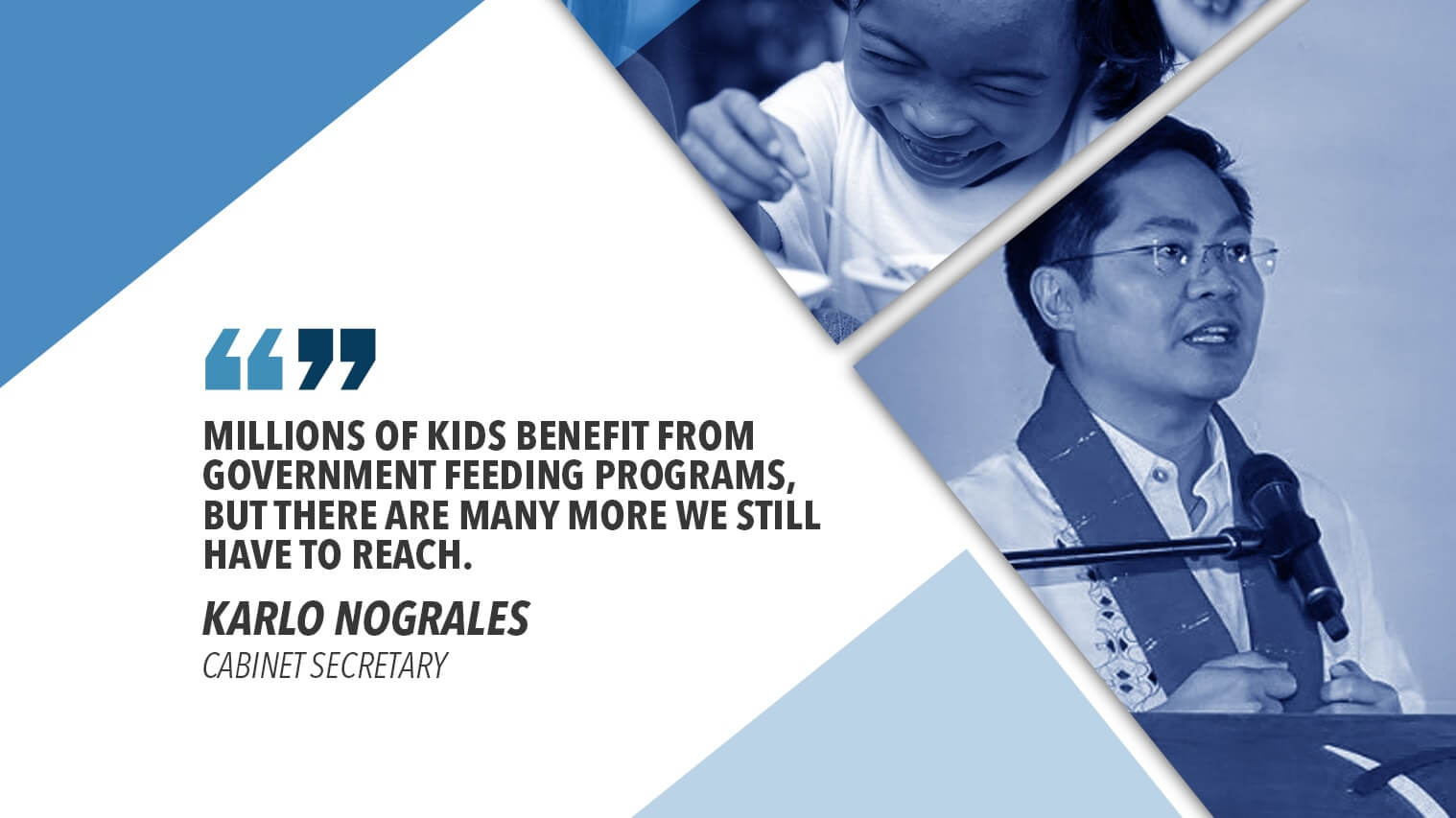#GoodbyeGutom, said Cabinet Secretary Karlo Nograles, is the objective of the government’s Expanded Partnership Against Hunger and Poverty (EPAHP), a program involving several departments that will work closely together to eradicate hunger in the country by 2030.
Nograles on Monday said that while there are indicators which show that inroads are being made to reduce hunger incidence nationwide, recent data reinforces the government’s decision “to build on and step up current efforts to address hunger in the second half of the President’s administration.”
“We still have a lot of work to do to make sure every Filipino child is properly fed, until we can finally say #GoodbyeGutom.”
The Palace executive was referring to the June 2019 SWS survey that found 35% of Filipino families rating their food as Mahirap or Poor, referred to by the SWS as “Food Poor.” The figure is 8 percentage points higher than the record-low 27% of families in March 2019.
According to Nograles, even before the new poll came out, the President had already directed members of the Cabinet “to align the different anti-hunger and poverty-reduction initiatives of the various agencies so that our programs can be more effective and will have an impact on more Filipinos, especially children.”
“Millions of kids benefit from government feeding programs, but there are many more we still have to reach. We still have a lot of work to do to make sure every Filipino child is properly fed, until we can finally say #GoodbyeGutom.”
During the Pre-SONA activity held in Cebu, cabinet secretaries belonging to the Human Development and Poverty Reduction Cluster reported that from 2018 to 2019, 3.6 million children had benefited from government feeding programs.
For school year 2018 to 2019, on the other hand, 2.1 million undernourished students were also the beneficiaries of feeding programs. An additional 4.29 million children also benefited from cash subsidies for food from the government’s 4Ps program.
“The same whole-of-government approach that has proven effective in other government initiatives will be adopted and applied to address hunger.”
To improve government anti-hunger efforts, said Nograles, the EPAHP will be adding more members to its original agencies, which currently include the Department of Agriculture, the Department of Agrarian Reform, and the Department of Social Welfare and Development.
The other agencies now part of the EPAHP are the Department of Education, the Department of Health, the Department of Interior and Local Government, the Department of Science and Technology, the National Nutrition Council, the National Youth Commission, and Landbank.
Among the priority programs under the EPAHP, explained the lawyer, are the following: (1) provisions for the institutional feeding programs; (2) credit support to community-based organizations; (3) capacity-building and productivity improvement for community-based organizations; (4) nutrition education; (5) establishment of agricultural facilities and technologies, food hubs, and other infrastructure facilities; (6) mobilization of funding, technical and research assistance from development and local partners; and advocacy and education.
“The same whole-of-government approach that has proven effective in other government initiatives will be adopted and applied to address hunger.
Data in 2018 revealed that 2.4 million families experienced moderate to extreme hunger, 13.7 million Filipino children are undernourished, and that a fifth of Filipino children until the age of five are underweight.

